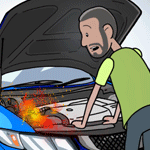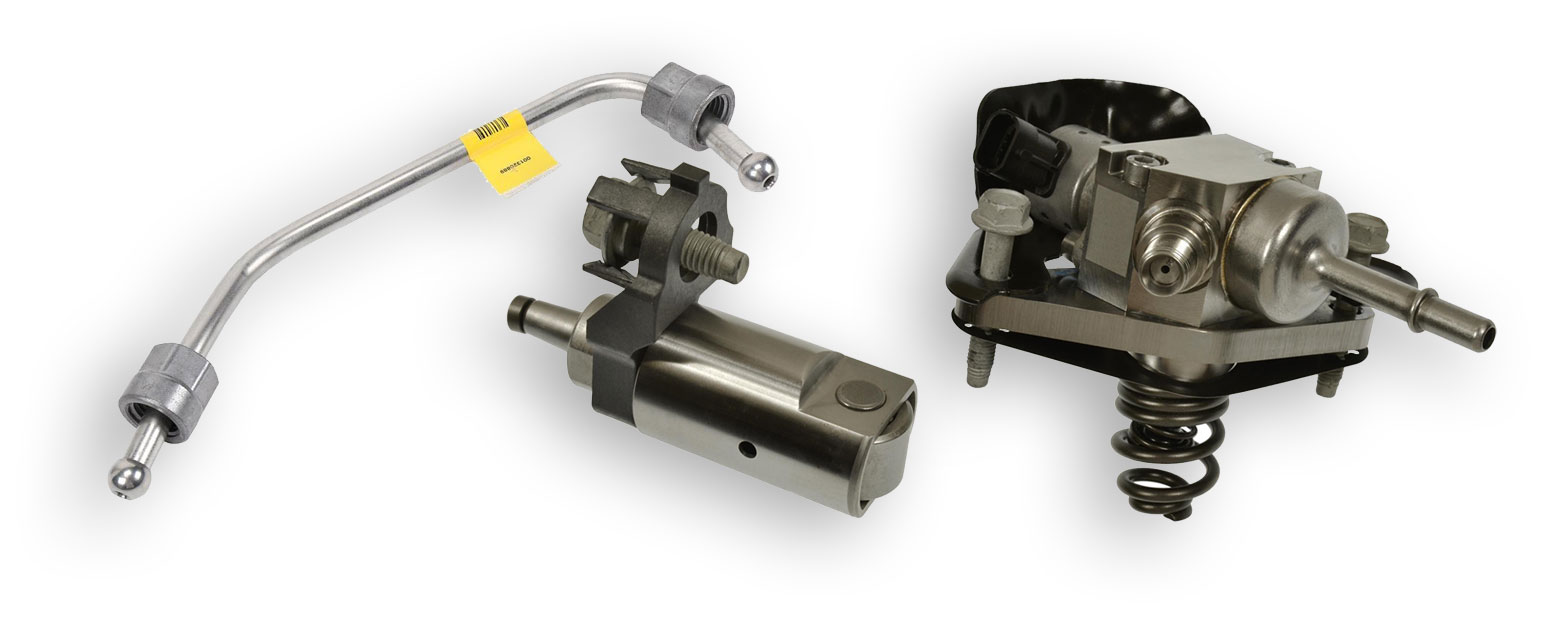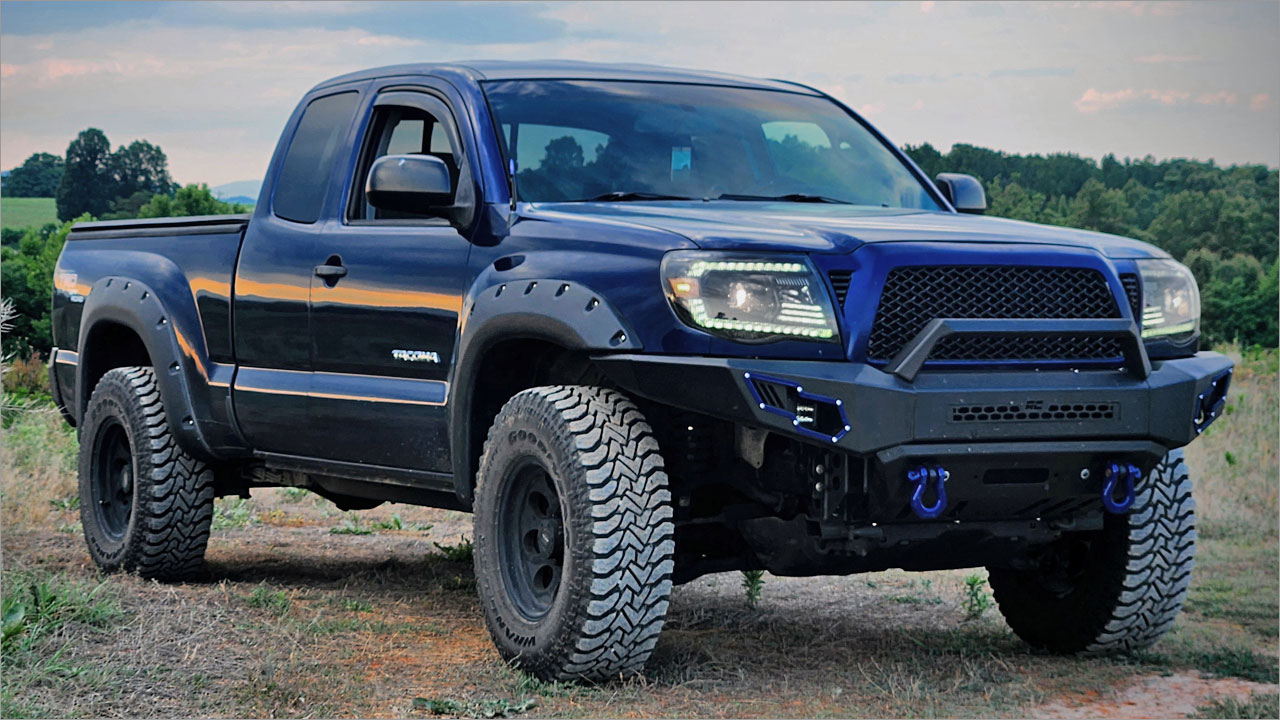Pages
|
Bosch is offering RockAuto customers an instant 10% manufacturer rebate on Rotors, Brake Pads, Brake Shoes, Brake Fluid, and Rotor & Brake Pad Kits through the end of November, 2024 and an instant 15% manufacturer rebate on all Bosch Filters through the end of December, 2024. Simply add any qualifying Bosch brake part or filter (marked with a Find these parts and more in the RockAuto.com catalog under the "Brake & Wheel Hub", "Engine", "Fuel & Air", and "Heat & Air Conditioning" categories for your vehicle. | |

| |
 | |
 Back in the early 1970’s, I was a Ford Dealership mechanic. One of our customers had bought a new Falcon Utility, but returned the following day saying that it had developed an extremely annoying, intermittent “buzzing” sound somewhere in front of him in the dashboard area. We went for a drive with the owner but heard nothing. This scenario was repeated several times with the same results over the next few weeks. Eventually an extremely frustrated owner managed to have me drive in the vehicle, and I finally heard the noise! Now we knew the sound we were looking for. We removed the dash and everything else back to the firewall, checked, and re-assembled everything. We never found the cause but the noise was now gone ... or so we thought until the owner returned the following week. The shop manager and I were put on the case. One of us drove while the other, with feet in the air and head up under the dash, looked for the source of the sound. On day two, I started the car, and the buzzing started immediately. As the seat was too far forward for me, I reached under the seat, grabbed the seat release handle to move the seat, and the buzzing stopped immediately. Hah ... I found it! A small plastic knob mounted on the metal seat release lever, retained by a small grub screw, was loose! I tightened that tiny screw and all was well. Steve in New Zealand Share Your Story |
|
 A few years back, I wrote an article (Do I Need a New Fuel Pump or Timing Set?) on how a camshaft-driven gasoline direct injection (GDI) fuel pump might incorrectly take the blame if an engine's timing is off. The fuel pump is fine, but the computer is adjusting fuel pump pressure up and down at the wrong times. This article is about the opposite scenario, the timing chain is in decent shape, but the GDI fuel pump is finally giving out after heroically generating thousands of PSI of pressure for many hours/miles. A failing GDI fuel pump might make noise. The pump might stop suddenly or intermittently if the solenoid(s) that are used by the computer to control fuel pressure burn out. Seals inside the pump may start to leak. Symptoms of a leaking GDI fuel pump might include gasoline showing up in the engine oil. The dipstick could show rising oil levels in the crankcase, and (flammable!) gasoline fumes might be noticeable. Surprisingly, computer trouble codes associated with a too rich air/fuel ratio might start turning on. When the engine warms up, some of the gasoline now sloshing around in the crankcase vaporizes and gets sucked into the intake via the positive crankcase ventilation (PCV) system. These unexpected gasoline fumes make the mixture too rich, especially at idle when intake vacuum is highest and the most air/fumes pass through the PCV system. Be sure to follow the instructions in your vehicle's repair manual (found under "Literature" at RockAuto.com) when replacing a GDI fuel pump. It is important to safely dissipate fuel pressure before disconnecting fuel lines. A low pressure electric pump in the fuel tank typically delivers the gasoline to the mechanical high pressure GDI fuel pump. Repair manuals often suggest unplugging the fuse for the low pressure fuel pump while the engine is running. The engine will stall when the available fuel (and fuel pressure) are used up. As with any fuel pump, it is easier to unplug the fuel line connectors if you have the correct fuel line disconnect tool. The extreme pressure in a GDI system often means the high pressure fuel line fittings are "one time use." A fuel line with distorted fittings has to be replaced.  Fuel Line, Camshaft Follower & GDI Fuel Pump There is typically a fuel pump camshaft follower that moves with the camshaft and drives the rod/spring jutting out of the GDI fuel pump. The pump's spring is often under a lot of pressure. Repair manuals typically recommend loosening/tightening the pump's mounting bolts evenly to avoid sudden movement and/or twisting that might damage the spring, rod or camshaft follower. While the pump is removed, it is usually a good idea to inspect/replace the camshaft follower if possible. To minimize the pressure on the spring/rod, repair manuals typically recommend having the camshaft lobe/camshaft follower in its lowest position before installing the new GDI fuel pump. The instructions will typically say to put piston one at top dead center (TDC) or put a thick, rod-shaped tool in the camshaft hole and watch for it to reach its lowest point while the engine is slowly turned over by hand (using breaker bar and socket to rotate crankshaft). See the fuel pump(s), fuel lines and other fuel system parts for your specific vehicle under "Fuel & Air" in the RockAuto.com catalog. Find camshaft followers under "Engine." Tom Taylor, To read more of Tom's articles, click this link and choose from story titles on the Newsletter Archives page. |
|
 |
|
This is my 2006 Toyota Tacoma. I take great pride in it as it was my first project truck. When I first bought the Tacoma, it was showing its age and neglected. Slowly, I worked hard to put lots into reviving it both mechanically and installing cosmetic upgrades along the way for a more rugged look. I did all the work myself in my driveway with a jack and a couple of jack stands. With the help of you guys at RockAuto, I was able to order and replace parts to rebuild the driveshaft, sway bar links, ball joints, spark plugs, and both front and rear brakes. Thank you! |
Share Your Hard Work & Stories | |
|
Your Hard Work Do you purchase parts from RockAuto? If so, RockAuto would like to give you the opportunity to have your car or truck possibly featured in one (or occasionally more) of our publications such as the monthly newsletter, collector magnets or other commercial use. New, old, import, domestic, daily driver, trailer queen, classic, antique, we want to see them all! For submission instructions and tips for taking pictures of your car, please visit our Photography Tips & Submission Info page. Your Most Infamous Auto Repair Blunder Use your woe to help others avoid similar mistakes. Please email your story to marketing@rockauto.com. Include your mailing address and if you would like a RockAuto Hat if we publish your story. See the Hats under Tools & Universal Parts in the RockAuto catalog. The story will be credited using only your first name and your vague geographic location (state, province, country, continent, etc.) so you can remain semi-anonymous! | |